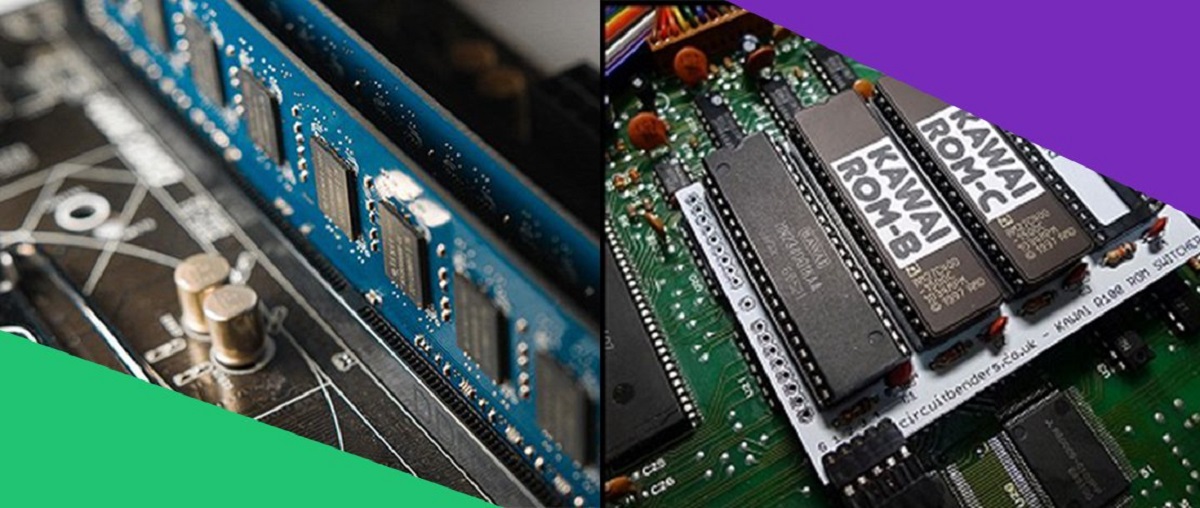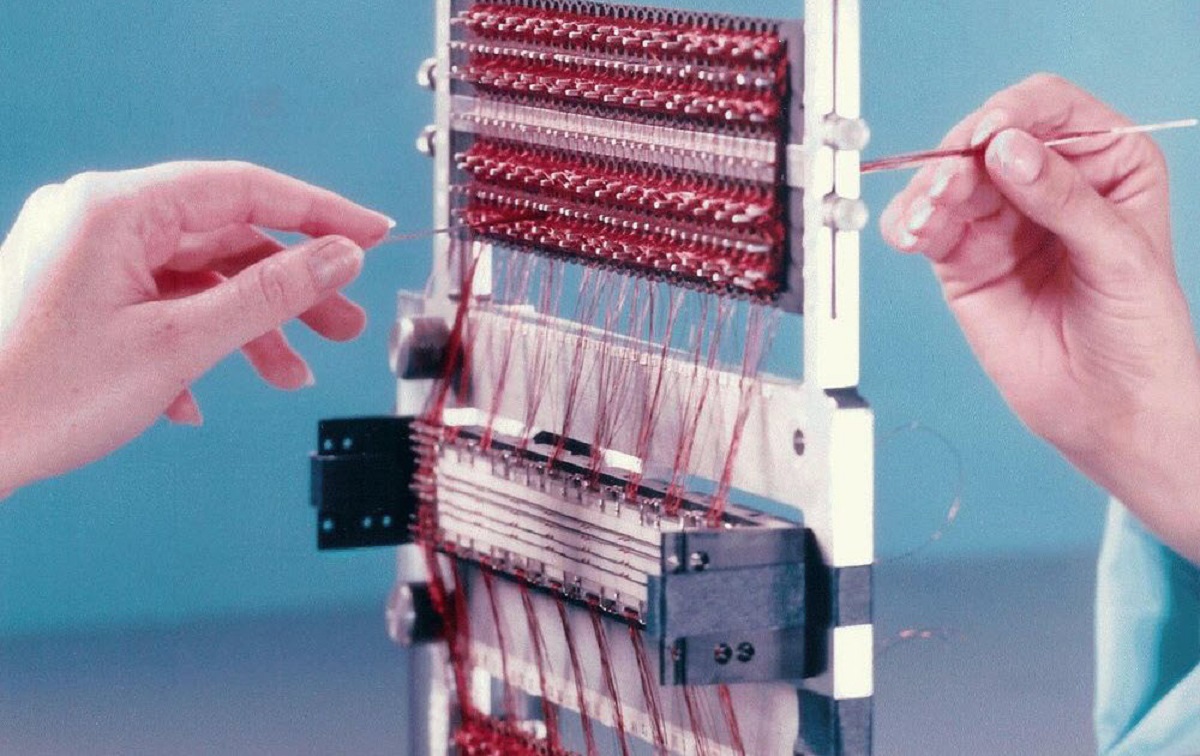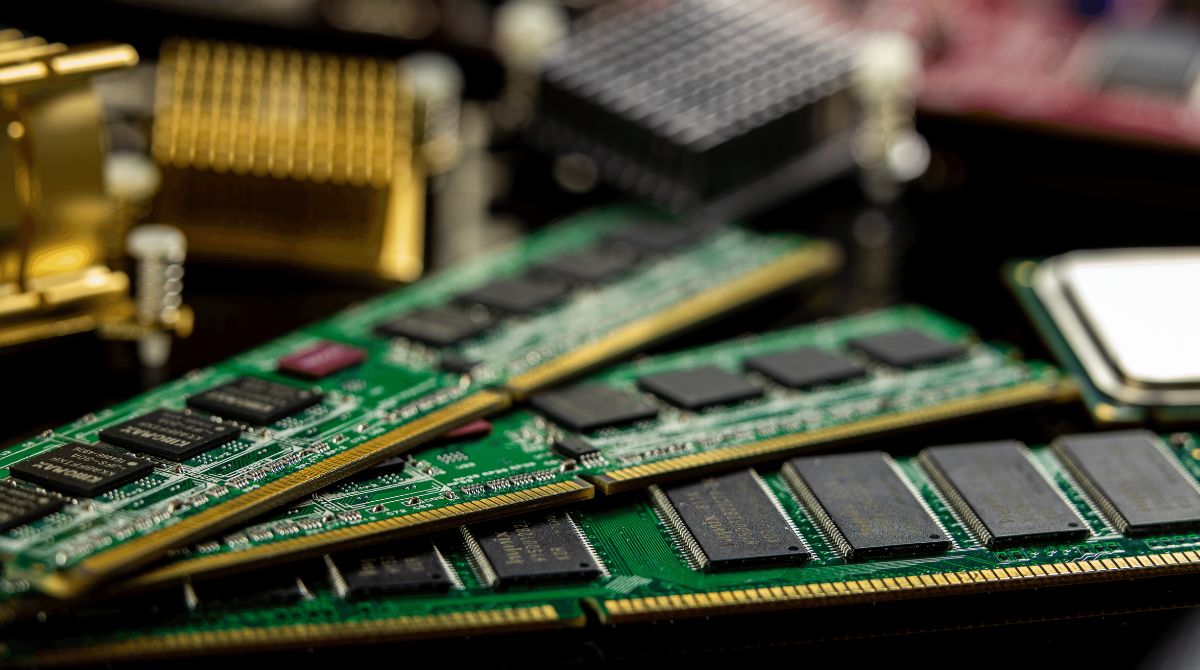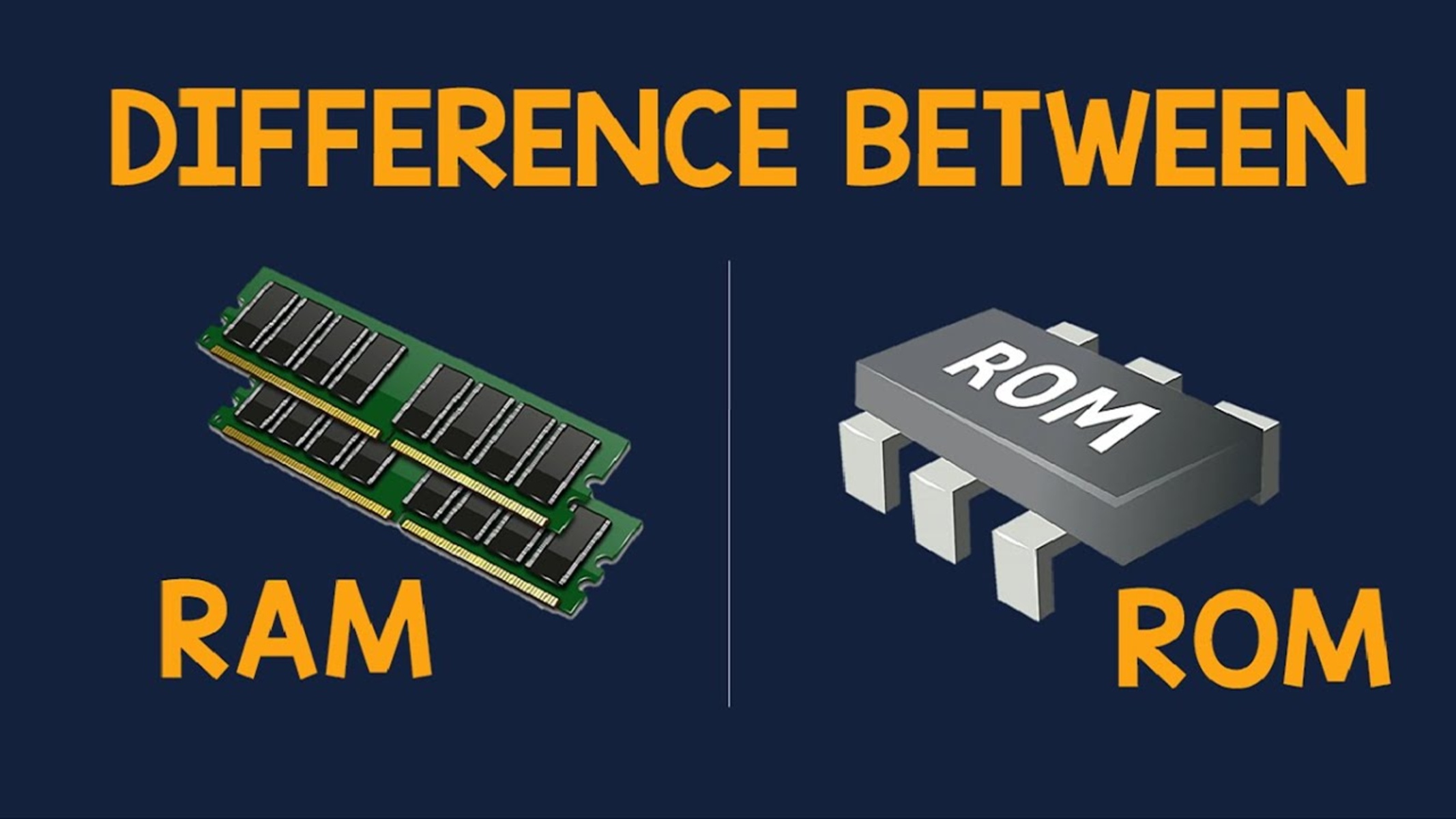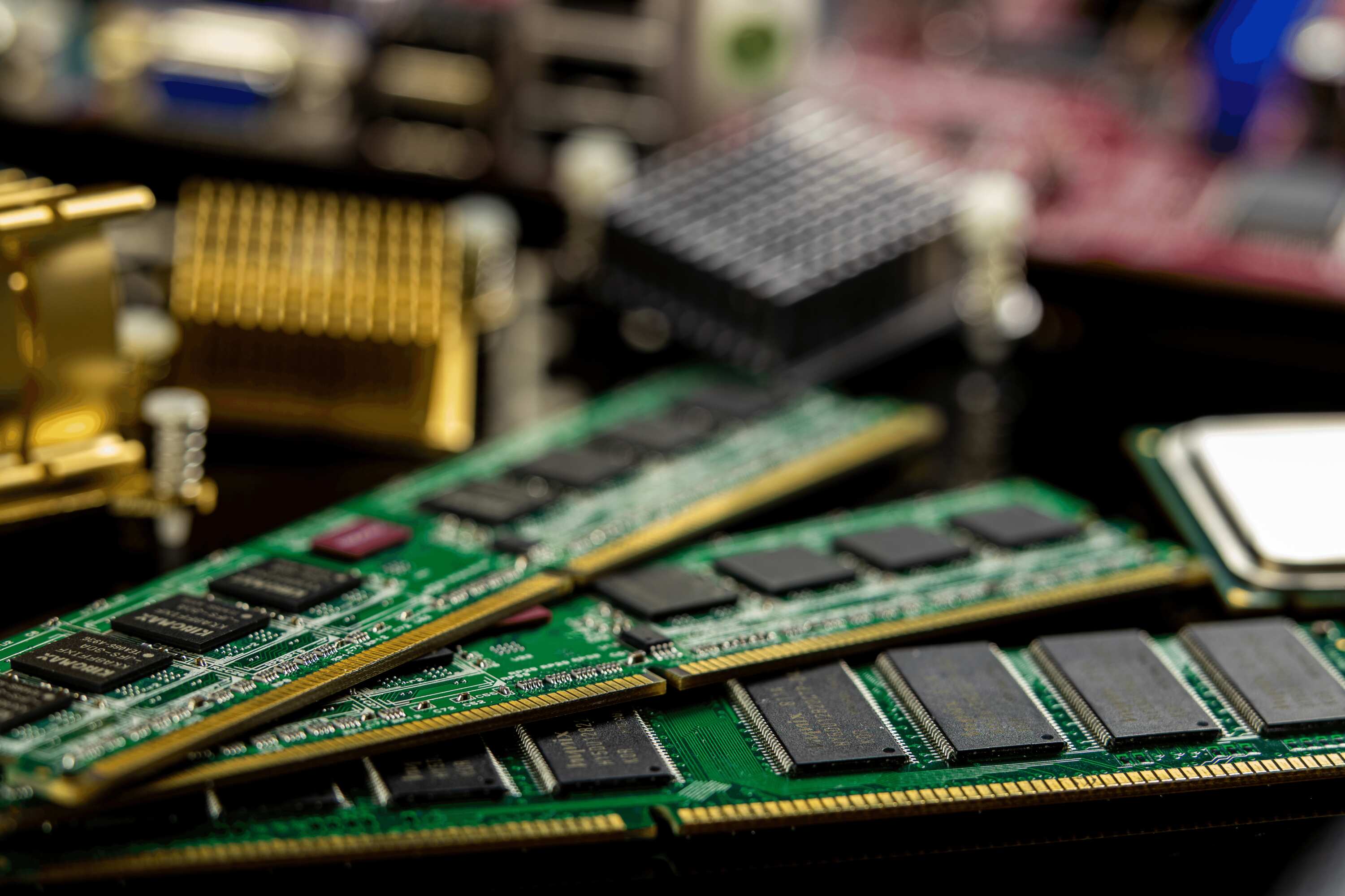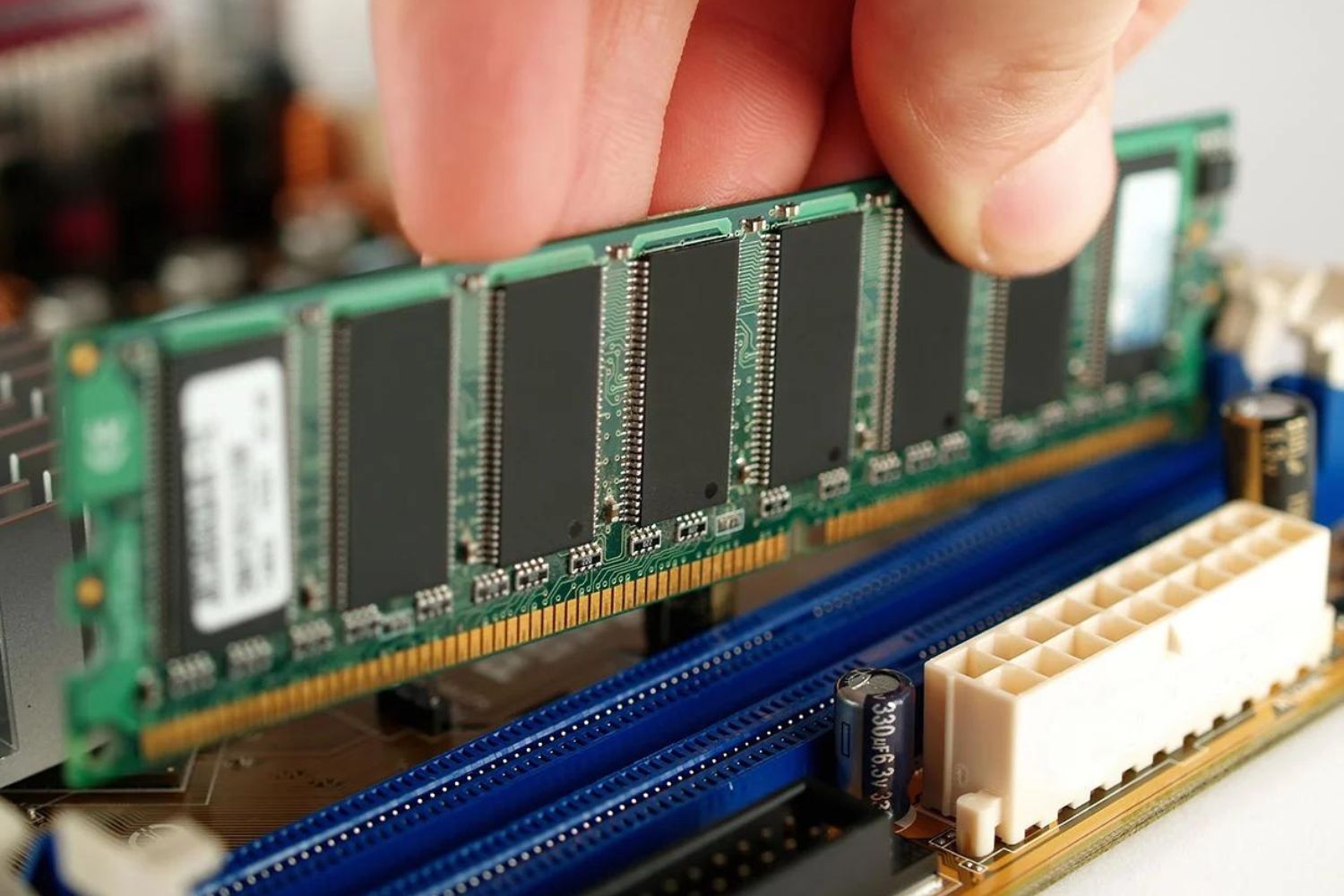What Is RAM?
RAM, which stands for Random Access Memory, is a crucial component in a computer system. It plays a vital role in determining the performance and speed of a computer. RAM serves as the temporary storage area for data and instructions that are actively being used by the computer’s processor.
Unlike a computer’s long-term storage, such as the hard drive or solid-state drive, RAM is volatile memory. This means that its contents are lost when the computer is powered off or restarted. However, its volatile nature allows for quick access and retrieval of data, making it essential for efficient multitasking and smooth operation.
When you open a program or file, the relevant data is loaded from the storage drive into RAM. This allows the processor to access and manipulate the data at a much higher speed compared to reading it directly from the drive. The more RAM a computer has, the more data it can temporarily store, resulting in improved performance and responsiveness.
With the advancement of technology, RAM has evolved over the years. From the early days of computers where a few kilobytes of RAM were considered sufficient, modern systems now come equipped with gigabytes or even terabytes of RAM. This increase in capacity enables computers to handle more complex tasks, run resource-intensive software, and efficiently manage large amounts of data.
Furthermore, RAM also plays a critical role in gaming and multimedia applications. When playing a resource-demanding game or editing high-resolution videos, having a substantial amount of RAM ensures that the system can process and render the graphics and media files smoothly, preventing lag or stuttering.
It is important to note that RAM is not a permanent storage solution. Its purpose is to provide fast access to data that is currently in use by the computer. Therefore, it is crucial to save any important work or files to a long-term storage medium like a hard drive or cloud storage to prevent data loss in the event of a power outage or system restart.
In summary, RAM is a vital component in a computer that provides temporary storage for data and instructions required by the processor. It allows for quick access and manipulation of data, resulting in improved performance and multitasking capabilities. As technology advances, the capacity of RAM continues to increase, enabling computers to handle more demanding tasks efficiently.
What Does RAM Stand for?
RAM is an acronym for Random Access Memory. As the name suggests, it refers to the computer’s memory that allows for random access to data. Unlike traditional storage devices like hard drives that require sequential access, RAM allows the computer to retrieve data in a non-sequential and rapid manner.
Random Access Memory is a volatile form of memory, meaning its contents are lost when the computer is powered off or restarted. When the computer is turned on, the operating system and various applications are loaded into RAM to facilitate quick access and execution. This allows for faster retrieval and processing of data, resulting in improved system performance and responsiveness.
RAM acts as a temporary storage space, holding data and instructions that the computer’s processor requires for its current operations. This includes running programs, storing application data, and executing system processes. The processor accesses this data directly from RAM, speeding up its operation compared to retrieving it from a storage drive like a hard disk.
The capacity of RAM is measured in bytes and is commonly expressed in gigabytes (GB) or terabytes (TB). The larger the RAM capacity, the more data can be stored for immediate access, allowing for smoother multitasking, faster execution of complex tasks, and efficient handling of large files.
It’s important to note that RAM is a temporary storage solution and is cleared when the computer is powered off. This means any unsaved data or work done solely in RAM will be lost. To avoid data loss, it’s essential to save work to a persistent storage medium, such as a hard drive or cloud storage, which retains data even when the computer is turned off.
In summary, RAM stands for Random Access Memory and refers to a computer’s temporary storage space that provides quick and random access to data. It plays a vital role in enhancing system performance and multitasking capabilities. Understanding the concept of RAM is essential to optimize a computer’s speed and efficiency.
How Does RAM Work?
RAM, or Random Access Memory, works as a temporary storage area in a computer system. It allows the computer’s processor to quickly access and retrieve data needed for current operations. Understanding how RAM works is crucial in comprehending its role in enhancing system performance.
When the computer is powered on, the operating system, software applications, and other necessary data are loaded into RAM. This data remains accessible to the processor throughout the computing session. As programs and files are opened, their relevant data is also loaded into RAM, providing quick access for the processor to manipulate and utilize the information.
RAM is organized into millions or billions of memory cells, each capable of storing a small amount of data. These cells are arranged in rows and columns, forming a grid-like structure called a memory array. Each cell’s unique address allows the processor to access and modify its contents independently.
RAM operates on the principle of capacitors and transistors. Capacitors store electrical charge, representing a binary state of either 0 or 1. Transistors act as switches, allowing the processor to read and write data to the capacitors.
When the processor needs to read data from RAM, it sends an electronic pulse through the corresponding address lines to request the data. The requested data’s electrical charge in the capacitors is measured, and this information is sent back to the processor.
Similarly, when the processor needs to write data to RAM, it sends an electronic pulse to the appropriate address lines, specifying the location where the data should be stored. The transistors switch on or off accordingly, modifying the electrical charge in the capacitors to represent the new data.
The speed at which RAM operates is measured in megahertz (MHz) or gigahertz (GHz) and is commonly referred to as the RAM’s clock speed. The higher the clock speed, the faster the RAM can read and write data, resulting in improved overall system performance.
It is important to note that RAM is volatile memory, meaning its contents are lost when the computer is powered off or restarted. This is why it’s crucial to save important work or files to a persistent storage medium, such as a hard drive or cloud storage, to prevent data loss.
In summary, RAM works by providing a temporary storage area for data that the processor needs for current operations. It operates on the principle of capacitors and transistors, allowing for quick access and modification of data. Understanding how RAM functions is essential in optimizing system performance and ensuring efficient multitasking capabilities.
What Is ROM?
ROM, or Read-Only Memory, is another type of computer memory that stores data permanently, even when the computer is powered off. Unlike RAM, ROM is non-volatile, meaning it retains its contents regardless of power supply.
As the name suggests, ROM is primarily used for storing data that needs to be read but not altered or deleted. It contains firmware, software instructions, or data that are essential for the computer’s operation, such as the system’s BIOS (Basic Input/Output System) or firmware for peripheral devices like keyboards or printers.
ROM is manufactured with its contents pre-recorded during the production process. This data is stored in a series of memory cells that are organized and accessed in a similar manner to RAM. However, unlike RAM, where data can be read and modified, the data stored in ROM is unchangeable or, at the very least, can only be modified through specialized procedures or tools.
There are different types of ROM, each catering to different purposes. One common type is Mask ROM, where the data is permanently programmed during the manufacturing process using a photomask. Once programmed, it cannot be changed or erased.
Another type of ROM is Programmable Read-Only Memory (PROM). PROM allows data to be written to it through a process known as burning, where electrical fuses are blown using specialized equipment. Once programmed, the data remains intact and cannot be altered.
Erasable Programmable Read-Only Memory (EPROM) is another variant that can be erased and reprogrammed using ultraviolet light. EPROMs have a small window on top that allows exposure to UV light, which erases the data stored inside. After erasure, data can be reprogrammed using specialized equipment.
The most common type of ROM used today is Electrically Erasable Programmable Read-Only Memory (EEPROM) or Flash memory. EEPROMs can be electrically erased and reprogrammed using electrical signals without the need for UV light. This type of ROM is found in various devices such as USB drives, memory cards, and solid-state drives (SSDs).
ROM provides permanent storage for critical instructions and data, ensuring that even if the computer’s power supply is interrupted or restarted, important information remains intact. It plays a significant role in booting up the computer and providing the necessary instructions for the operating system to run smoothly.
In summary, ROM is a type of non-volatile memory that stores data permanently, even without a power supply. It contains essential firmware and instructions required for the computer’s operation. Different types of ROM are used, each with its own characteristics and purposes, providing vital storage capabilities for various devices and systems.
What Does ROM Stand for?
ROM stands for Read-Only Memory. It is a type of computer memory that stores data permanently, even when the computer is powered off or restarted. Unlike Random Access Memory (RAM), which is volatile and temporary, ROM retains its contents without the need for an electrical power source.
Read-Only Memory is called so because the data stored in it can only be read, not modified or deleted. It is used for storing critical instructions, software, or data that need to be permanently available to the computer during its operation.
During the manufacturing process, the data is programmed into the ROM, similar to writing information to a CD or DVD. Once programmed, the data is locked, and it cannot be altered through regular means. This makes ROM an essential component in any computer system, providing the necessary instructions for booting up and initializing the hardware and software.
There are various types of ROM, each with its own characteristics and purposes. Mask ROM (MROM) is one type where data is permanently written during the manufacturing process. The data is embedded in the circuitry, and it cannot be modified or erased.
Programmable Read-Only Memory (PROM) is another type of ROM that allows the user to write data once. This is achieved by blowing electrical fuses in specific memory cells, permanently setting their values. Once programmed, the data remains intact and cannot be changed.
Erasable Programmable Read-Only Memory (EPROM) is a type of ROM that can be erased and reprogrammed using ultraviolet light. To erase the data, the EPROM must be exposed to ultraviolet light, which resets all memory cells to their initial state. After erasure, new data can be programmed into the EPROM using specialized equipment.
Electrically Erasable Programmable Read-Only Memory (EEPROM), also known as Flash memory, is a modern variant of ROM that can be electrically erased and reprogrammed. Unlike EPROM, EEPROM does not require exposure to ultraviolet light for erasure. Instead, specialized electrical signals can erase and rewrite the data, making EEPROM more convenient and flexible.
ROM plays a crucial role in ensuring the stability and reliability of a computer system. Its ability to retain and provide the necessary instructions and data for booting and operating the hardware and software makes it an integral component in various devices and systems.
In summary, ROM stands for Read-Only Memory, a type of computer memory that stores data permanently and cannot be modified or deleted. It provides critical instructions and data for the computer’s operation and is available in different forms, such as Mask ROM, PROM, EPROM, and EEPROM.
How Does ROM Work?
Read-Only Memory (ROM) is a type of memory in a computer system that stores data permanently. Unlike Random Access Memory (RAM), which is volatile and temporary, ROM retains its contents even when the power is turned off. Understanding how ROM works is essential to grasp its role in booting up a computer and providing crucial instructions.
ROM consists of memory cells, similar to RAM, organized into a grid-like structure. Each memory cell stores a fixed amount of data, typically represented using binary code. The data in ROM is programmed during the manufacturing process and cannot be modified or erased by regular means.
When the computer starts up, the system’s Basic Input/Output System (BIOS) is one of the primary instructions accessed from the ROM. The BIOS contains firmware, which is a set of instructions for the computer’s hardware initialization and basic operations. This firmware provides the necessary information for the system to start functioning and prepares the computer for booting the operating system.
The computer’s processor reads the instructions from the ROM by sending electrical signals to the appropriate memory cells. These memory cells contain electronic circuits that determine the binary state of the stored data. By accessing the specific memory cells, the processor retrieves the necessary instructions and data to perform the computer’s initialization and basic functions.
ROM works based on the concept of non-volatility. Its data is stored in a way that remains intact without requiring a continuous power supply. This is achieved through various programming methods and technologies.
One common type of ROM is Mask ROM (MROM), where data is permanently embedded during the manufacturing process. It is programmed by creating a physical layer of circuitry that represents the desired data. Once the mask ROM is created, the data stored in it cannot be modified or erased.
Programmable Read-Only Memory (PROM) is another type of ROM that allows users to program the memory after manufacturing. This programming is achieved by blowing electrical fuses, changing the electrical state of specific memory cells. Once programmed, the PROM retains the data permanently, and it cannot be modified.
Erasable Programmable Read-Only Memory (EPROM) is a type of ROM that can be erased and reprogrammed using ultraviolet (UV) light. EPROMs have a transparent window on top, which allows exposure to UV light during the erasing process. This exposure resets all memory cells to their initial state, allowing new data to be programmed into the EPROM using specialized equipment.
Electrically Erasable Programmable Read-Only Memory (EEPROM), also known as Flash memory, is a modern variation of ROM that can be erased and reprogrammed using electrical signals. Unlike EPROM, EEPROM can be erased and reprogrammed multiple times without the need for UV light exposure.
In summary, ROM works by storing data permanently and providing crucial instructions for booting up a computer and initializing the hardware and software. Its non-volatile nature allows it to retain data even without a continuous power supply. Different types of ROM, such as Mask ROM, PROM, EPROM, and EEPROM, offer varying levels of programmability and erasability, ensuring the permanent storage of critical data and firmware in computer systems.
What Is the Difference Between RAM and ROM?
RAM (Random Access Memory) and ROM (Read-Only Memory) are two different types of computer memory that serve distinct purposes in a computer system. Understanding the differences between RAM and ROM is crucial in comprehending their roles in storing and accessing data.
1. Data Storage: RAM is a volatile memory that serves as temporary storage for data that is actively in use by the computer’s processor. It allows for quick and random access to information, enabling efficient multitasking and faster execution of programs. On the other hand, ROM is non-volatile memory that stores data permanently, even when the power is turned off. It contains firmware and critical instructions needed for the computer’s operation.
2. Read and Write Access: RAM allows both read and write access, meaning that data can be both retrieved from and modified in RAM. This dynamic nature of RAM allows for data to be constantly updated and manipulated. In contrast, ROM only allows read access, meaning data stored in ROM can be retrieved but not modified or deleted. ROM provides a stable and unchangeable source of instructions and data.
3. Volatility: RAM is considered volatile memory because its contents are lost when power is interrupted or the computer is restarted. This volatility allows for quick data access but requires data to be saved to non-volatile storage, such as a hard drive, for long-term preservation. In contrast, ROM is non-volatile. It retains its contents even without a continuous power supply, making it ideal for storing crucial system information and firmware.
4. Functionality: RAM plays a crucial role in determining the performance and responsiveness of a computer. It allows for faster access and retrieval of the data needed for current operations. The size and speed of RAM directly impact system performance, with more RAM enabling smoother multitasking and faster program execution. ROM, on the other hand, provides essential instructions and data for booting up the computer and initializing hardware components. It ensures the stability and functionality of the computer system.
5. Programmability: RAM is not programmable. Its contents are determined by the data being processed by the computer at any given moment. In contrast, certain types of ROM, such as PROM (Programmable Read-Only Memory), EPROM (Erasable Programmable Read-Only Memory), and EEPROM (Electrically Erasable Programmable Read-Only Memory), allow for data to be programmed or modified during specific processes or with specialized equipment. However, most ROM types are typically preprogrammed during manufacturing and cannot be altered by the end-user.
6. Usage: RAM is essential for day-to-day computer operations, providing temporary storage for running programs, storing data, and facilitating multitasking. It is commonly used in caching, virtual memory, and software development. ROM, on the other hand, is used for critical system instructions, firmware, and data that need to be permanently available, such as the computer’s BIOS (Basic Input/Output System).
In summary, the main differences between RAM and ROM lie in their volatility, functionality, storage capabilities, and accessibility. RAM is volatile and provides temporary storage for data actively used by the computer, while ROM is non-volatile and stores permanent data and instructions. Understanding the distinctions between RAM and ROM is crucial in optimizing a computer’s performance and ensuring the stability and functionality of the system.







